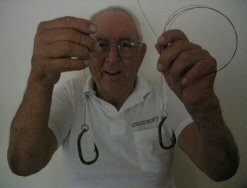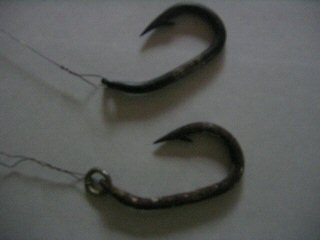

My boat, the Cricket II, started shark fishing in 1951, off Montauk, Long Island, New York. After we got going pretty well in the late 1950s, I realized that my boat was the only one that was shark fishing. Things continued that way for the next twenty years until the movie “Jaws” was released, and then everyone who had a boat became an instant shark fisherman! But back when I was the only boat shark fishing, a lot of times I tried to figure out which way the sharks were migrating. Did they come in from the east in the spring, and head south for the winter? Or did they come in from the Gulf Stream.
Every year on the first trip of each season, the same question popped into my head: Where do we start fishing for sharks? It occurred to me that if people started tagging sharks, we might get some valuable information back about their migration routes. At that time, the government was handing out tags for striped bass, tuna and marlin, but there was no interest in sharks. After talking to a lot of my satisfied customers, and explaining to them that the government didn’t hand out tags for sharks, I got the ball rolling. Quite a few of my customers were either up there in our government, or knew someone that was. It took a few years of us sending up smoke signals before something got done.
This is where Jack Casey came in. His title was “Chief, Apex Predator’s Investigation.” Jack started his research on sharks at Sandy Hook Laboratory, New Jersey, in 1961. And according to Jack’s assistant, Marine Fisheries Biologist Wes Pratt, the first shark was tagged in 1962. Jack has been retired for a few years now. The program has since been renamed “the Apex Predator’s Program," and Dr. Nancy Kohler is its new chief.
Back in the early sixties, when we got the tagging program started, I thought it would do a lot of good and provide us with plenty of information, regarding the migratory patterns of sharks. I suppose it has sent back some information that would be of interest to the National Marine Fisheries biologists, but--and there always is a “but”-- I discovered that we had created a monster that we couldn’t control.
The monster we created was, and still is, the fact that fishermen are going out there and gut-hooking the sharks they are tagging, killing them in the process. For instance, off Montauk alone, on any given day of successful shark fishing, a hundred boats leave the dock and come back telling us that they have tagged twelve fish each. Perhaps ten of those twelve will die because they’re gut-hooked. So now multiply that times a hundred boats and you will come up with 1,000 dead sharks in one day, out of one port, along one coast. This is a low estimate and I know the numbers are higher on other days.
 So how does a conservation-minded fisherman keep from gut-hooking a shark during the tagging process? A good way to ensure hooking a shark in the jaw is by using the right hook. One of the best hooks to use is the Mustad circle hook. This will, almost all of the time, hook the shark in the jaw.
So how does a conservation-minded fisherman keep from gut-hooking a shark during the tagging process? A good way to ensure hooking a shark in the jaw is by using the right hook. One of the best hooks to use is the Mustad circle hook. This will, almost all of the time, hook the shark in the jaw. Don’t expect to get your hook back when tagging a fish; just cut the leader wire, because there is too much struggling involved in getting a hook out of a live shark in the water. Somebody is going to get hurt, or you’ll probably wind up killing the shark in the process. The hook that’s in his jaw will eventually rust out. It won’t hinder the shark in his eating habits as much as you might think. And the best place to insert the tag is in the shark’s back, alongside or behind his dorsal fin. The reason for this is that you are inserting the tag into solid meat. The tag will hold up better and it won’t bother the shark. Try to prevent tagging him anyplace in his abdomen, as you might cause internal damage.
© Frank Mundus 2000-2007